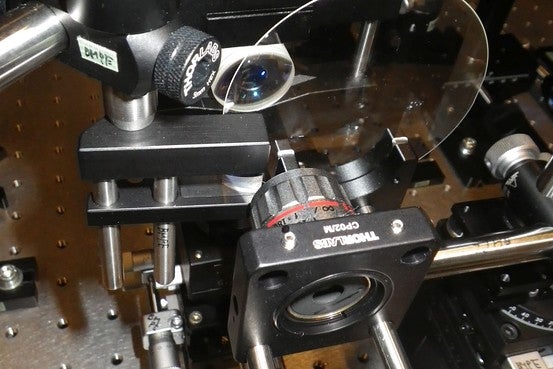World's fastest camera captures 4.4 trillion frames a second to watch chemical reactions
The Japanese STAMP cam uses a completely new technique to capture imagery 1000 times faster than previous cameras

Your support helps us to tell the story
From reproductive rights to climate change to Big Tech, The Independent is on the ground when the story is developing. Whether it's investigating the financials of Elon Musk's pro-Trump PAC or producing our latest documentary, 'The A Word', which shines a light on the American women fighting for reproductive rights, we know how important it is to parse out the facts from the messaging.
At such a critical moment in US history, we need reporters on the ground. Your donation allows us to keep sending journalists to speak to both sides of the story.
The Independent is trusted by Americans across the entire political spectrum. And unlike many other quality news outlets, we choose not to lock Americans out of our reporting and analysis with paywalls. We believe quality journalism should be available to everyone, paid for by those who can afford it.
Your support makes all the difference.Researchers in Japan have developed a camera that can record 4.4 trillion frames in a single second, allowing scientists to capture new images of some of nature’s most fascinating and blink-and-you-miss-‘em processes, from intense chemical reactions to plasma dynamics.
The team behind the Sequentially Timed All-optical Mapping Photography (STAMP) camera say it has already managed to record images of heat conduction, a process that can happen at one sixth the speed of light.
By comparison the slow-motion video feature on Apple’s iPhone - which takes around 120 frames per second – would have to record for more than 1161 years to capture as many frames as STAMP cam does in the time it takes for you to click your fingers.
However, even pretty aged smartphones would beat STAMP cam in terms of resolution - although its 450 x 450 pixel pictures are more than good enough for its highly specialized work.
Most exciting perhaps, is that the STAMP cam is working on entirely new principles. While previous lab-spec high-speed cameras have relied on what’s known as the ‘pump-probe’ process, wherein tiny packets of light are fired or ‘pumped’ at an object and ‘probed’ to see how much the object absorbs, the STAMP cam only ‘pumps’ them, with a separate device used to handle the object’s “spatial profile”.
The team of researchers from Keio University and the University of Tokyo are calling the new techniques “motion picture femtophotography”, and their research paper, published in the journal Nature Photonics has the full details for the spectrographically inclined.
For scientists and the public though the camera will mean new insight into all sorts of processes that are hidden simply from sight simply because they operate at a time frame so extreme that it feels like a different dimension.
Back in 2011, researchers from MIT created a high-speed camera that captured light passing through an empty bottle in slow motion by acquiring visual data at one trillion frames a second – to the STAMP cam, more than four times faster than this, even the speed of light could be as stimulating as watching paint dry.
Join our commenting forum
Join thought-provoking conversations, follow other Independent readers and see their replies
Comments